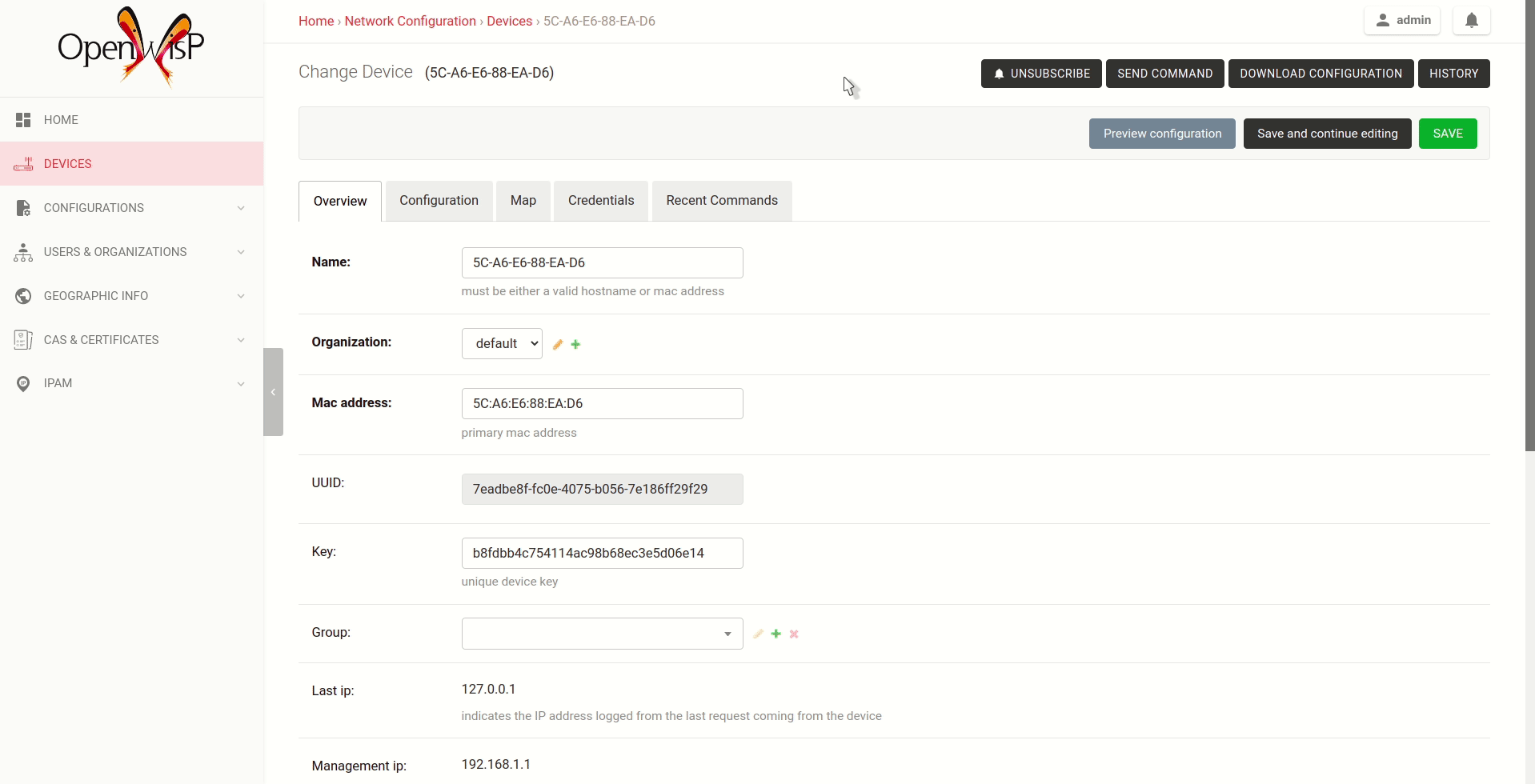Sending Commands to Devices
Default Commands
By default, there are three options in the Send Command dropdown:
Reboot
Change Password
Custom Command
While the first two options are self-explanatory, the custom command option allows you to execute any command on the device as shown in the example below.

Important
In order for this feature to work, a device needs to have at least one valid Access Credential (see How to configure push updates).
The Send Command button will be hidden until the device has at least one Access Credential.
If you need to allow your users to quickly send specific commands that are used often in your network regardless of your users' knowledge of Linux shell commands, you can add new commands by following instructions in the Defining New Options in the Commands Menu section below.
Note
You can also use the REST API to execute commands on a device.
Note
If you're an advanced user and want to learn how to register commands programmatically, refer to the Registering / Unregistering Commands section.
How to register or unregister commands
Refer to Registering / Unregistering Commands in the developer documentation.
